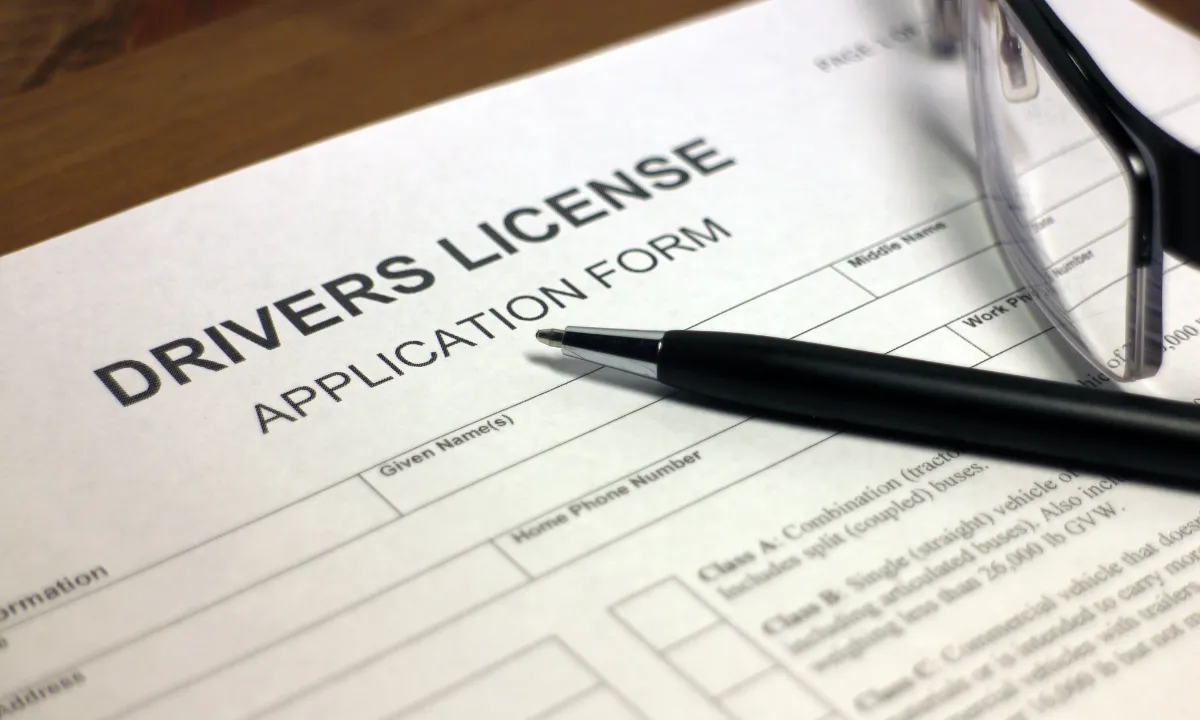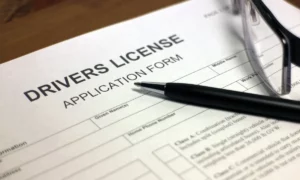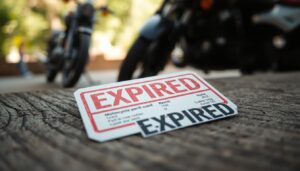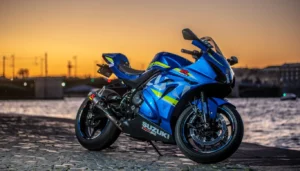A motorcycle license is a document that certifies that an individual has the necessary skills and knowledge to operate a motorcycle on public roads. It is typically issued by the government or a relevant authority after the individual has completed a series of tests and requirements, which may include a written test, a road test, and/or a motorcycle safety course.
In many countries, there are different types of motorcycle licenses that correspond to different engine sizes and levels of experience.
For example, a beginner rider may start with a lower-level license that limits the size of the motorcycle they can ride and imposes certain restrictions, while a more experienced rider may be eligible for a higher-level license that allows them to ride larger, more powerful motorcycles.
It’s important to note that the specific requirements for obtaining a motorcycle license may vary depending on the country or state in which you live.
How To Get A Motorcycle License?
Below is a rough summary of the procedures you might need to take to receive a motorbike license. The procedure can vary based on your location.
Keep in mind that depending on where you live, different conditions may need to be met in order to receive a motorcycle license. For more information, contact your local DMV or government organization.
Check the requirements
You can typically find this information by visiting the website of your local government or Department of Motor Vehicles (DMV).
They will have detailed information on the specific requirements for obtaining a motorcycle license in your area.
You can also try searching online for “motorcycle license requirements” in your location.
Obtain a learner’s permit
To obtain a learner’s permit for a motorcycle license, the specific steps can vary depending on your location, but generally, you can follow these steps:
Get the requirements: Visit the website of your local government or DMV to learn about the specific requirements for obtaining a learner’s permit for a motorcycle license in your area.
Complete the application: Obtain and fill out an application for a motorcycle learner’s permit. The application will typically require your personal information, such as your name, address, and date of birth.
Pass a written test: You will need to pass a written test on traffic laws and safe motorcycle operation. The test will cover topics such as rules of the road, motorcycle controls, and safe riding practices. Some locations may require you to complete a motorcycle safety course before you can take the written test.
Provide identification and payment: Bring valid identification, such as a driver’s license or passport, to prove your identity and residency. You will also need to pay a fee to obtain your learner’s permit.
Take a vision test: You will typically be required to pass a vision test to ensure that you can see well enough to safely operate a motorcycle.
After completing these stages and passing the written and visual tests, you will receive a learner’s permit to legally practice riding a motorbike on public roads with a licensed rider. Be sure to follow any restrictions or guidelines listed on your permit.
Take a motorcycle safety course
Take a motorcycle safety course to learn how to ride safely. Here are the general steps to take a motorcycle safety course:
Find a course: Check with your local DMV or search online to find a motorcycle safety course in your area. Your local DMV or government body should approve a course.
Register for the course: Register for the course and pay any associated fees. Some courses may have specific requirements or prerequisites, so be sure to read the course description and requirements carefully before registering.
Attend the course: Attend the course and participate in all of the classroom and hands-on training sessions. The course will typically cover topics such as motorcycle controls, basic riding techniques, defensive riding strategies, and emergency maneuvers.
Pass the course: Complete all of the course requirements, including any written or practical exams. If you pass the course, you may receive a certificate of completion, which may be required to obtain your motorcycle license.
A motorcycle safety course is not mandatory, but it is strongly recommended, especially for beginning riders. It can teach you motorbike safety techniques.
Practice riding
Practicing riding is an essential part of learning how to ride a motorcycle safely and confidently. Here are some general steps you can follow to practice riding:
Get the right gear: Before you start practicing, make sure you have the right gear, including a helmet, riding jacket, gloves, and boots. Wearing protective gear can help keep you safe in case of an accident.
Find a safe location: Look for a quiet, empty parking lot or residential area where you can practice without worrying about traffic or other hazards.
Start slowly: Begin by practicing basic maneuvers, such as starting, stopping, turning, and shifting gears. Practice these maneuvers slowly and gradually increase your speed as you become more comfortable.
Build your skills: Practice more advanced maneuvers, such as counter-steering, emergency braking, and swerving. These skills can help you stay safe in real-world riding situations.
Practice with a licensed rider: If possible, practice riding with a licensed rider who can provide guidance and feedback on your technique. They can also help you identify areas where you may need to improve.
Be patient: Learning to ride a motorcycle takes time and practice. Don’t get discouraged if you make mistakes or feel nervous at first. Keep practicing and building your skills, and you will become more confident and comfortable on the bike.
Remember, practicing riding is an essential part of learning how to ride a motorcycle safely. Be sure to practice in a safe and controlled environment and always wear the appropriate safety gear.
Take the road test
Taking the road test is the final step in obtaining your motorcycle license. Here are the general steps to take the road test:
Schedule the test: Contact your local DMV or government agency to schedule the road test. You may need to provide your learner’s permit and proof of completion of any required motorcycle safety courses.
Prepare for the test: Review the motorcycle operator’s manual and practice the skills and maneuvers that will be tested, such as starting, stopping, turning, and emergency maneuvers.
Show up for the test: On the day of the test, arrive at the testing site on time and bring your learner’s permit, proof of insurance, and any required documents.
Demonstrate your skills: During the test, you will be asked to demonstrate your ability to operate a motorcycle safely and confidently. This may include performing various maneuvers, such as starting, stopping, turning, and emergency maneuvers.
Pass the test: If you pass the road test, you will be issued a motorcycle license. If you do not pass the test, you may need to wait a specified period before retaking the test.
Once you have passed the road test and obtained your motorcycle license, you are legally allowed to operate a motorcycle on public roads. Remember to always wear the appropriate safety gear, follow traffic laws, and ride responsibly.
Obtain your motorcycle license
To obtain your motorcycle license, you need to follow a series of steps and meet specific requirements.
Here are the general steps to obtain your motorcycle license:
Meet the age requirements: The minimum age to obtain a motorcycle license varies by state or country. Typically, you must be at least 16 or 18 years old, depending on the location.
Pass a vision test: You may need to pass a vision test to ensure you can see well enough to operate a motorcycle safely.
Pass a knowledge test: You will need to pass a knowledge test that covers the rules of the road, motorcycle safety, and other topics related to motorcycle operation.
Obtain a learner’s permit: You may need to obtain a learner’s permit, which allows you to ride a motorcycle with restrictions, such as not riding at night or carrying passengers. To obtain a learner’s permit, you may need to pass a motorcycle safety course and a riding skills test.
Practice riding: Practice riding a motorcycle to build your skills and confidence. You may need to complete a certain number of practice hours before taking the road test.
Take a motorcycle safety course: Taking a motorcycle safety course is highly recommended, as it can help you develop the skills and knowledge needed to operate a motorcycle safely.
Take the road test: Take the road test to demonstrate your ability to operate a motorcycle safely and confidently. If you pass the road test, you will be issued a motorcycle license.
Once you have obtained your motorcycle license, you are legally allowed to operate a motorcycle on public roads. Be sure to always wear the appropriate safety gear, follow traffic laws, and ride responsibly.
Eligibility to Get a Motorcycle Licence
The eligibility requirements for obtaining a motorcycle license can vary depending on the country or state. However, here are some general eligibility requirements:
Age: The minimum age requirement to obtain a motorcycle license can vary depending on the country or state. Typically, you must be at least 16 or 18 years old.
Knowledge test: You must pass a knowledge test that covers the rules of the road, motorcycle safety, and other topics related to motorcycle operation.
Vision test: You may need to pass a vision test to ensure you can see well enough to operate a motorcycle safely.
Learner’s permit: You may need to obtain a learner’s permit, which allows you to ride a motorcycle with restrictions, such as not riding at night or carrying passengers. To obtain a learner’s permit, you may need to pass a motorcycle safety course and a riding skills test.
Motorcycle safety course: A motorcycle safety course may be required to get a license in some countries or states.
The course can help you develop the skills and knowledge needed to operate a motorcycle safely.
Riding skills test: You will need to pass a riding skills test that demonstrates your ability to operate a motorcycle safely and confidently.
Criminal record: In some countries or states, a criminal record may prevent you from obtaining a motorcycle license.
It’s essential to check the specific requirements for obtaining a motorcycle license in your country or state.
Is getting a Motorcycle license expensive?
The cost of getting a motorcycle license can vary depending on several factors, such as the country or state where you live, the cost of the required training courses, and the cost of the license itself.
Motorcycle license costs include:
Training courses: Depending on your location, you may be required to take a motorcycle safety course before obtaining your license.
These courses can range in cost from a few hundred to a few thousand dollars.
Knowledge and skills test: You may need to pay a fee to take the knowledge and skills tests required to obtain your motorcycle license.
License fee: You will need to pay a fee to obtain your motorcycle license.
Equipment: You will also need to purchase or rent appropriate safety gear, such as a helmet, gloves, and boots.
The overall cost of obtaining a motorcycle license can range from a few hundred to a few thousand dollars, depending on the factors mentioned above.
However, the cost of getting a motorcycle license may be worth it to ensure your safety and the safety of others while operating a motorcycle on public roads.
How to get motorcycle license in USA ( MD, VA, NJ, California, Ohio)
The process of obtaining a motorcycle license can vary depending on the state you live in. Here are the general steps to obtain a motorcycle license in some of the states you mentioned:
Maryland:
- Complete a Maryland Motor Vehicle Administration (MVA) approved motorcycle safety course or pass a skills test.
- Pass a vision test and a knowledge test.
- Obtain a Maryland motorcycle learner’s permit, which requires passing a written exam.
- Practice riding on the learner’s permit for at least 9 months before taking the road test.
- Pass the motorcycle road test to obtain a full license.
Virginia:
- Complete a Virginia Rider Training Program course or pass a skills test.
- Pass a vision test and a knowledge test.
- Obtain a Virginia motorcycle learner’s permit, which requires passing a written exam.
- Practice riding on the learner’s permit for at least 9 months before taking the road test.
- Pass the motorcycle road test to obtain a full license.
New Jersey:
- Complete a New Jersey Motorcycle Safety Education Program course or pass a skills test.
- Pass a vision test and a knowledge test.
- Obtain a New Jersey motorcycle permit, which requires passing a written exam.
- Practice riding on the permit for at least 20 days before taking the road test.
- Pass the motorcycle road test to obtain a full license.
California:
- Complete a California Motorcyclist Safety Program course or pass a skills test.
- Pass a vision test and a knowledge test.
- Obtain a California motorcycle learner’s permit, which requires passing a written exam.
- Practice riding on the learner’s permit for at least 6 months before taking the road test.
- Pass the motorcycle road test to obtain a full license.
Ohio:
Complete a Basic Rider Course or pass a skills test.
Pass a vision test and a knowledge test.
Obtain an Ohio motorcycle learner’s permit, which requires passing a written exam.
Practice riding on the learner’s permit for at least 20 days before taking the road test.
Pass the motorcycle road test to obtain a full license.
Be sure to check the specific requirements for obtaining a motorcycle license in your state, as they can vary.
Conclusion
Finally, getting a motorcycle license requires multiple processes. Motorcycle license requirements differ by country or state. A motorcycle safety course, knowledge and riding skills test, learner’s permit, practice riding, and road test are the typical steps.
Motorcycle license costs depend on training, equipment, and license fees. Check your nation or state’s motorbike licensing requirements and fees.





